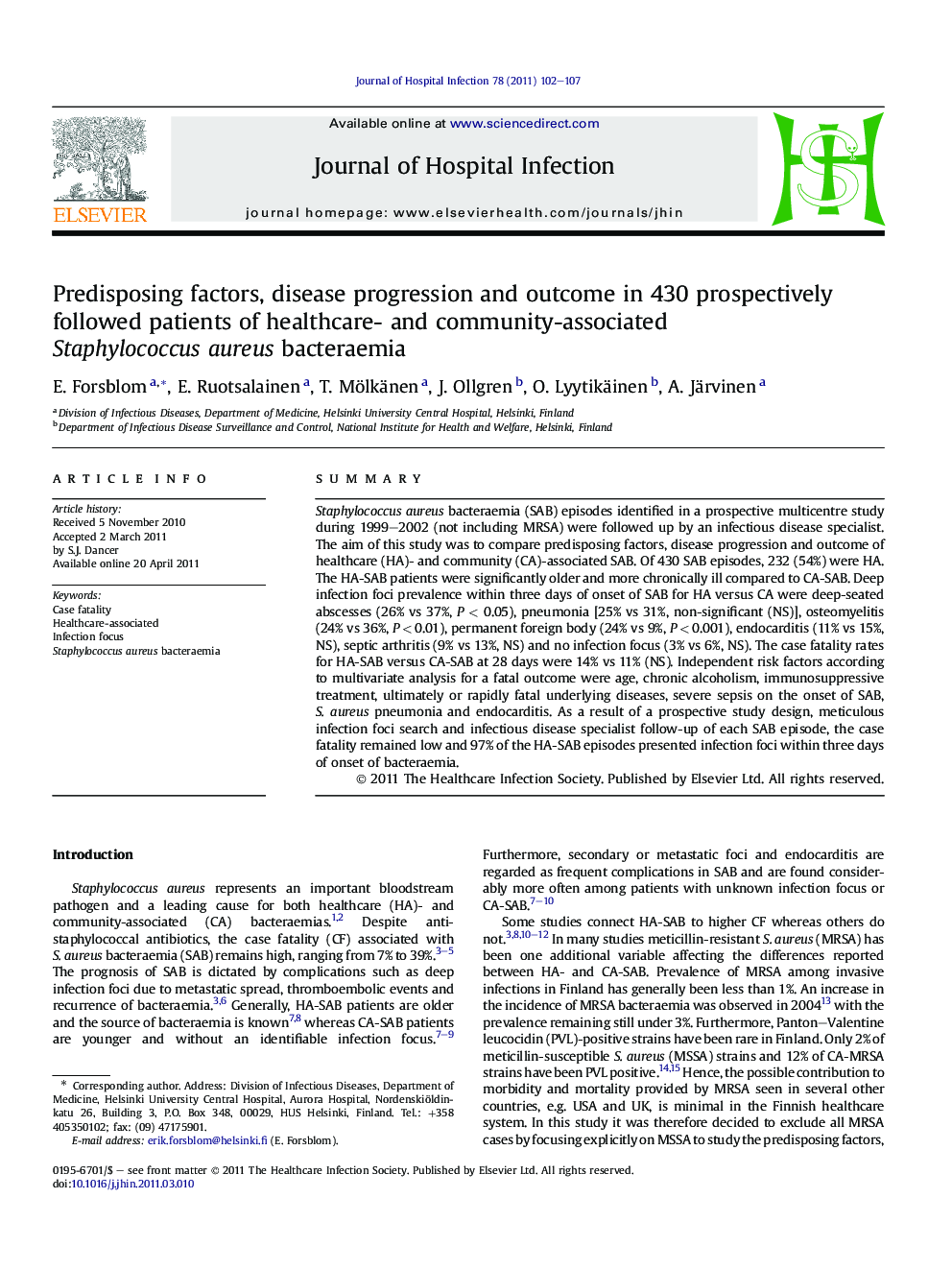| Article ID | Journal | Published Year | Pages | File Type |
|---|---|---|---|---|
| 3372341 | Journal of Hospital Infection | 2011 | 6 Pages |
SummaryStaphylococcus aureus bacteraemia (SAB) episodes identified in a prospective multicentre study during 1999–2002 (not including MRSA) were followed up by an infectious disease specialist. The aim of this study was to compare predisposing factors, disease progression and outcome of healthcare (HA)- and community (CA)-associated SAB. Of 430 SAB episodes, 232 (54%) were HA. The HA-SAB patients were significantly older and more chronically ill compared to CA-SAB. Deep infection foci prevalence within three days of onset of SAB for HA versus CA were deep-seated abscesses (26% vs 37%, P < 0.05), pneumonia [25% vs 31%, non-significant (NS)], osteomyelitis (24% vs 36%, P < 0.01), permanent foreign body (24% vs 9%, P < 0.001), endocarditis (11% vs 15%, NS), septic arthritis (9% vs 13%, NS) and no infection focus (3% vs 6%, NS). The case fatality rates for HA-SAB versus CA-SAB at 28 days were 14% vs 11% (NS). Independent risk factors according to multivariate analysis for a fatal outcome were age, chronic alcoholism, immunosuppressive treatment, ultimately or rapidly fatal underlying diseases, severe sepsis on the onset of SAB, S. aureus pneumonia and endocarditis. As a result of a prospective study design, meticulous infection foci search and infectious disease specialist follow-up of each SAB episode, the case fatality remained low and 97% of the HA-SAB episodes presented infection foci within three days of onset of bacteraemia.
